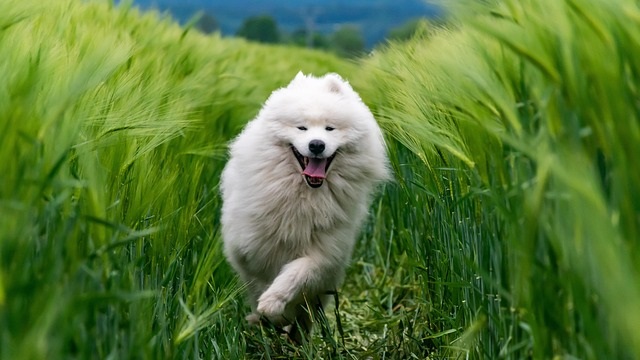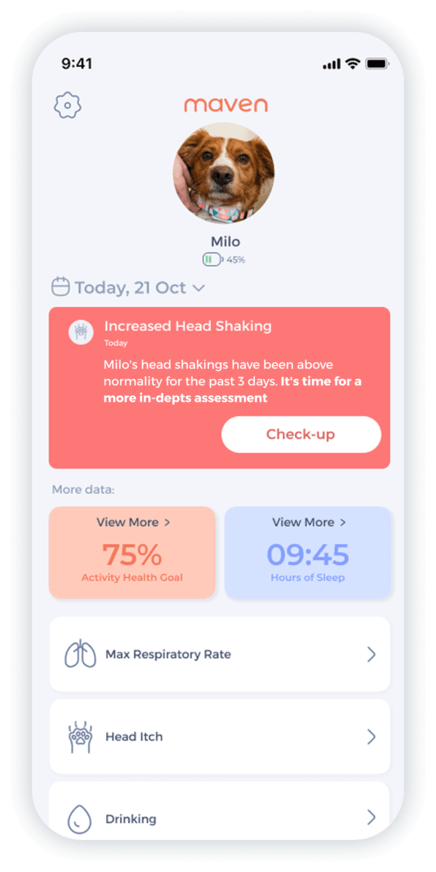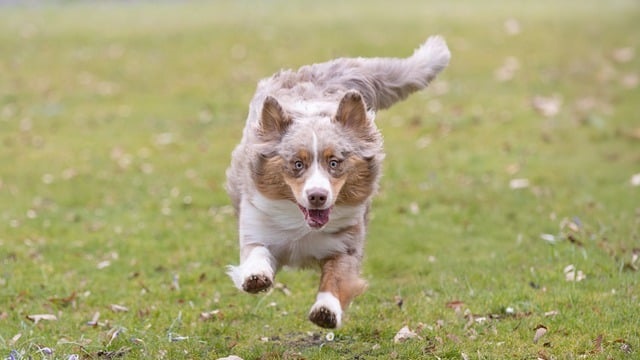Why Do Dogs Get the Zoomies? Fun or a Concern? (Vet Verified)
Is your dog suddenly racing laps around the living room like a furry, four-legged tornado? Congratulations—you’ve experienced the zoomies!
While this sudden burst of frantic energy can be entertaining, it often leaves pet parents wondering: What exactly is happening? Is it pure joy, or a sign of stress? And when should you step in?
In this article, we’re breaking down the science behind this bizarre, but totally normal, canine behavior and helping you understand when to relax and when to call your vet. Why do dogs get the zoomies? Let’s find out!
Key Takeaways:
- Zoomies are short, intense bursts of high-speed running, often in tight circles or figure-eight patterns.
- These bursts are a natural and healthy way for dogs to release pent-up energy.
- There are a few common triggers, such as the release of confinement, excitement, and stress.
- Watch for excessive zoomies accompanied by signs of anxiety.
Rely on a pet health tracker to monitor your furry friend’s activity and quickly detect abnormal behavior.
What Exactly Are the “Zoomies”?

Also known as Frenetic Random Activity Period (FRAP), zoomies are characterized by fast, erratic movements that typically last for just a minute or two before the dog flops down, happily exhausted.
Zoomies are most common in puppies and younger dogs who have an abundance of energy, but dogs of any age can experience them occasionally.
Why Do Dogs Get the Zoomies?
The core reason dogs get the zoomies is simple: emotional and physical release.
Zoomies serve as a pressure valve, allowing your dog to discharge an overwhelming amount of built-up energy or emotion. This can happen due to:
- Pent-Up Energy or Excitement: When a dog has been confined and is suddenly given freedom, they release that physical energy. Similarly, extreme joy can trigger an over-the-top reaction.
- Stress or Emotional Tension: The zoomies can also be a healthy coping mechanism to alleviate stress or discomfort after a difficult experience.
“I got the Maven sensor for my 14-year-old Chihuahua mix with heart and trachea issues. It gave me back peace of mind – I can track her RRR, BPM, drinking, and activity anytime and know instantly if something’s wrong. Highly recommend!”

★★★★★
Chiara De Luca
Titti
Why Do Dogs Get the Zoomies After a Bath?
This is one of the most common and dramatic zoomie scenarios.
A bath is a stressful and uncomfortable experience for most dogs, so you might find them getting the zoomies because:
- They’re celebrating the end of a stressful event
- They need to dry off their uncomfortable wet coat
- They’re reclaiming scent
Why Do Dogs Get the Zoomies After Pooping?
The post-poop sprint is a quirky favorite among many dog parents. There are a few theories behind this celebratory dash:
- Relief: Defecation is a vulnerable act for a dog, so successfully pooping can bring about a surge of relief that is released as physical energy.
- Territory marking: Running and kicking up the grass after elimination can be a form of territorial marking.
- Gut-Brain joy: The gut and the brain are directly linked by the vagus nerve. When your dog’s gut is healthy and the microbiome is balanced, it can often lead to a happier, less anxious mood.
Why Do Dogs Get the Zoomies at Night?
If your dog turns into a maniacal sprinter just before bed, one of three things could be happening:
- Excess energy build-up
- Overtiredness (especially puppies)
- Nightly bursts of energy that result from canine instincts.
When Zoomies Might Signal Stress or a Health Issue
“Zoomies are usually a totally normal way for dogs to burn off energy or excitement—but paying attention to patterns can help you spot when something feels off. If a playful FRAP suddenly turns into a frequent, frantic, or distressed-looking episode, it’s a good idea to assess their environment and potentially consult a professional.” Carolina Domingues, DVM, Veterinarian at Maven Pet
As Dr. Carolina Domingues puts it, most zoomies are a sign of healthy energy release. However, it’s important to identify if the behavior is caused by excitement or stress.
Let’s check which signs you should pay attention to.
Signs of Healthy Zoomies:
- Loose, wiggly body posture
- Play bows or open mouth with tongue out
- The tail may be held high or wagging, or tucked briefly while running, but the overall demeanor is relaxed
- The episode ends quickly (a minute or two) with the dog settling down, panting with a content expression
Signs of Anxiety-Driven Zoomies:
- Stiff or tense body posture throughout the episode
- Wide, “whale-like” eyes showing the whites, or ears pinned back tight to the head
- The tail is tightly tucked and held low, even when the dog slows down
- The dog may attempt to hide, escape, or struggle to calm down after the episode
Understanding these visual cues is crucial for knowing when to let your dog have their fun and when to investigate a potential source of discomfort or anxiety.
How to Channel High-Energy Bursts Safely

You should never punish or try to restrain your dog during a zoomie. And chasing them will only intensify the behavior.
Instead, keep the chaos safe by doing this:
- Clear the Path: If the zoomies happen indoors, make sure your dog has a safe, open, and clear space.
- Redirect and Manage: If the zoomies are happening at an unsafe time or place (like near a road or staircase), calmly interrupt the behavior by throwing a high-value toy or treat in a safe direction.
- Prevent with Exercise: The best management is prevention. Ensure your dog gets enough daily physical exercise and, crucially, mental stimulation to use up their energy in structured ways.
How the Maven Pet Health Monitor Helps Track Activity and Stress
Understanding the difference between a normal burst of fun and a stress-driven episode comes down to knowing your dog’s patterns.
The dog health tracker from Maven Pet can give you the objective data you need.


Monitor heart rate, respiratory rate, activity & rest, drinking, itch behavior.
- Identify Baseline Activity: Maven’s pet monitor establishes your dog’s normal daily activity levels, helping you see if they are getting enough exercise.
- Spot Stress Patterns: By monitoring changes in activity and rest, you can spot if frequent, frantic zoomies are leading to disturbed sleep or are always following a specific event .
- Measure Intervention Effectiveness: Tracking can help you confirm if a new routine is successfully reducing the frequency or intensity of stress-related zoomies. You can check all the data in your pet health app and share it with your vet if you need to.
Takeaways Recap
- Zoomies are a fun, normal, and healthy part of dog behavior.
- Whether it’s a celebration of a good poop, relief after a bath, or just the end-of-day crazies, embrace the silliness.
- Pay attention to the signs that differentiate normal zoomies from anxiety-driven bursts.
- Tracking your pet’s activity with tools like the Maven Pet Monitor, you can let your dog have their moment and feel confident that their wellbeing is the priority.
Maven Pet focuses on improving the quality of life of our pets with technology, using artificial intelligence (AI) to enable proactive pet care. By accurately collecting and monitoring pet data 24/7 and flagging any irregularities, Maven Pet empowers pet parents and veterinarians to stay ahead of potential health issues, ensuring the well-being and longevity of our beloved companions.




